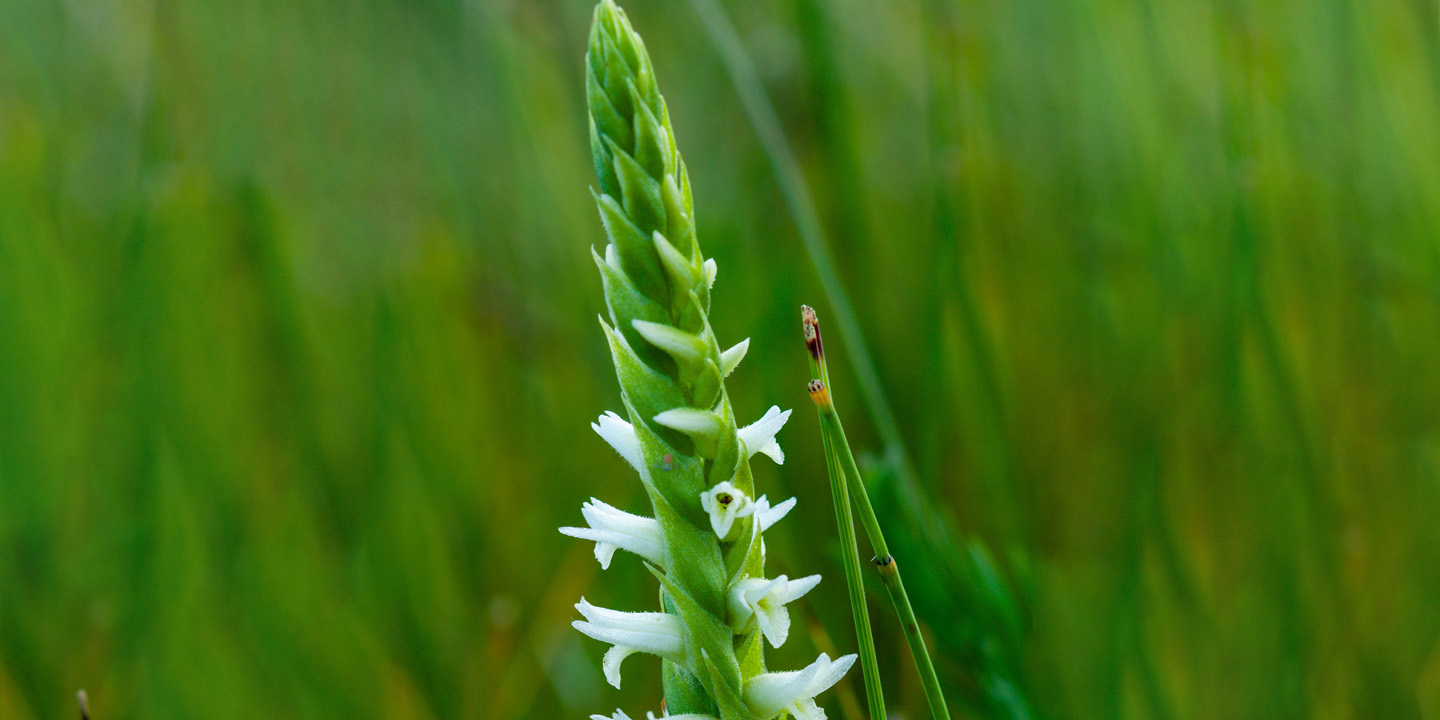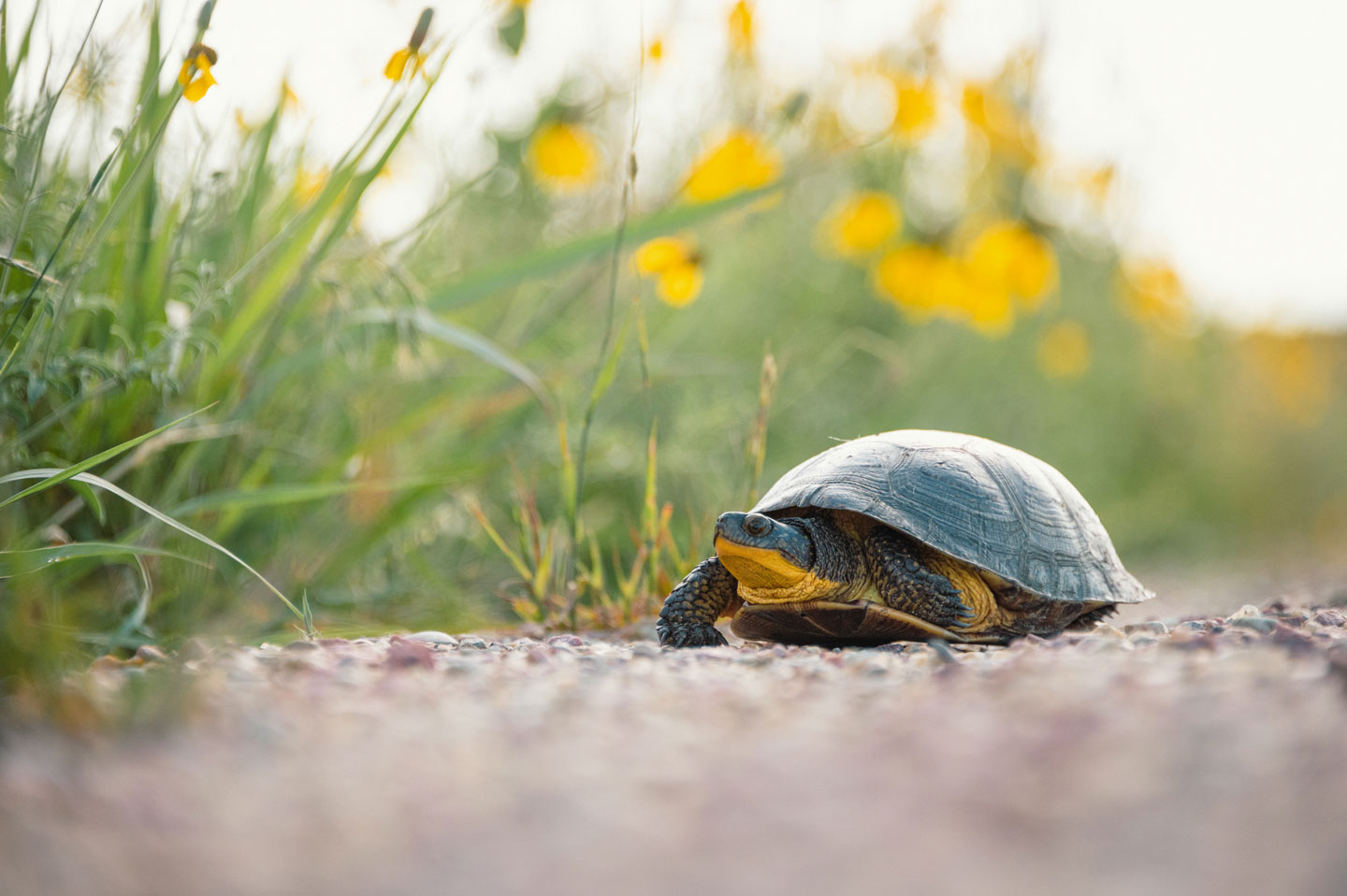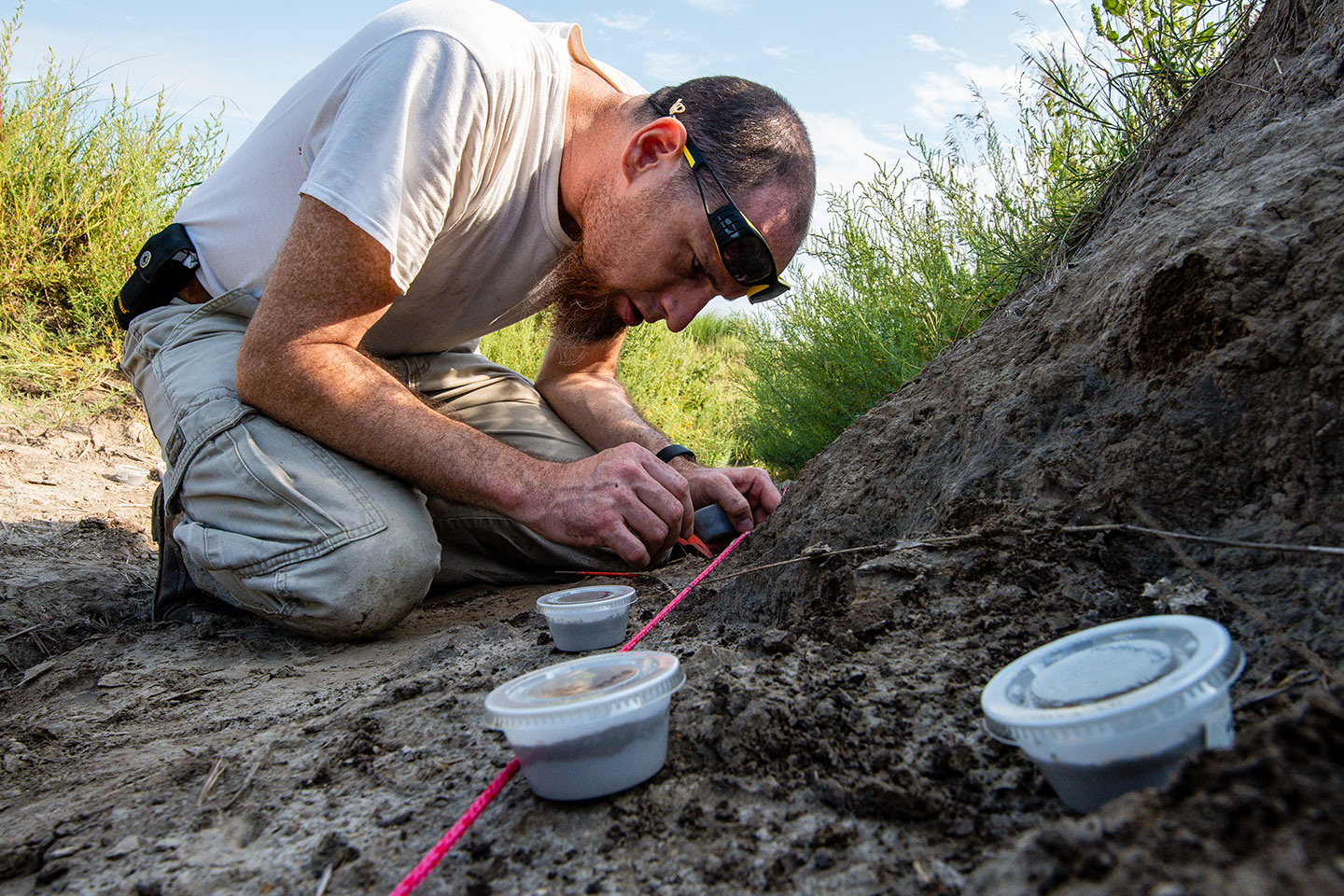Ute ladies'-tresses
Status: Threatened

Ute ladies’-tresses (Spiranthes diluvialis) is a perennial orchid. It grows from a fleshy tuberous root and has a stiff, upright stem 5 to 20 inches tall. The leaves are mostly basal, growing from the bottom of the plant, and are grass-like. They can grow up to 6 inches long and a half an inch wide. Ute’s ladies’-tresses develop a spike of seven to 32 small, ivory flowers arranged in two to four twisting rows resembling the braids (tresses) of a woman’s hair. Individual flowers are small and tubular with a hood, a pair of lateral petals, and a reflexed lower lip that is white with a faint yellow center.
Ute ladies’-tresses have a special relationship with mycorrhizal fungi. During periods of stress, such as drought, the mycorrhizal fungi allows the plant to survive underground for years at a time by providing the plants with water and nutrients. Then, when conditions improve, the plant again produces above-ground growth.
Range
In the United States Ute ladies’-tresses orchid is found in Wyoming, Colorado, Washington, Utah, Nevada, Idaho, Montana, and Nebraska. Specifically in Nebraska Ute ladies’-tresses is found in somewhat alkaline wet meadows only along a short stretch of the Niobrara River Valley in Sioux County.
Habitat
Ute ladies’-tresses are found in a habitat of low, sub-irrigated wet meadows with a somewhat alkaline soil. In other parts of its range, the orchid also be found in historic floodplains, stable wetlands and seep areas near freshwater lakes and springs.
Reproduction
The Ute ladies’-tresses is a short-lived perennial plant with a showy flower. It can produce as many as 7,300 tiny seeds per fruit. The seeds require specific moisture levels and temperatures to germinate.
Typical plant seeds contain both the embryo and an endosperm which provides energy and nutrients to the embryo until the plant has leaves and can produce its own energy. The seeds of the Ute ladies’-tresses do not contain an endosperm. Instead, it relies on mycorrhizal fungi in the soil to provide water and nutrients until the seed grows leaves and begins producing its own food.
Flowering begins in mid to late July through August; however it does not necessarily flower every year.
Population status
Ute ladies’-tresses was first found in Nebraska in 1996. The first survey for this species, completed in 1997, located approximately 2,300 plants. They were, and still are, found only on private land along a 2-mile stretch of the Niobrara River Valley. In 2010, another survey was completed which found only 831 flowering plants. Nationwide, there are only about 60,000 individual plants.
Habitat loss and degredation are the primary cause of the Ute ladies’ -tresses threatened status. Groundwater irrigation for crops is also a threat to Ute ladies’-tresses because they lower the water table and disturb the natural hydrology of the upper Niobrara River Valley.
Additionally, invasive plant species are competing with native flora including the orchid. The primary invasive species of concern are Garrison creeping foxtail and quackgrass, both cool-season grasses.
Also late summer (August-September) haying not only damages the plant, but also coincides with the flowering period, thus the seeds are not allowed to develop.
Ute ladies’-tresses do not flower every year and sometimes remain dormant for multiple years further adding to natural resource manager’s inability to properly document their location.
Ute ladies’-tresses was declared a federally listed threatened species in January 1992. It is also listed as a Nebraska threatened species.
Management and outlook
Several management practices are needed to conserve Ute ladies’-tresses in Nebraska. Reducing groundwater pumping along the upper Niobrara River to restore the valley’s natural hydrology and increasing stream flows and groundwater levels on which the Ute’s ladies-tresses depend is critical.
Preventing or eliminating invasive species, especially Garrison creeping foxtail and quackgrass, is another important management practice.
Finally, landowners should also avoid haying in late summer (August through September) to allow the plant to produce seeds.
Conservation help
Nebraska Game and Parks Commission biologists and those of other agencies can help landowners develop management plans that benefit this species through grazing practices, proper herbicide application, and timing haying for the benefit of both Ute ladies’-tresses and other prairie plants.
Individuals can help by donating to conservation organizations that work to protect the species, conserve Ute ladies’-tresses habitat, and educate the public about the importance of threatened and endangered species.
References
U.S. Fish & Wildlife Service. 2010. “Mountain-Prairie Region: Ute’s Ladies’-tresses Species Profile.” www.fws.gov/mountain-prairie/species/plants.
U.S. Fish and Wildlife Service. 1995. Ute Ladies’-Tresses (Spiranthes diluvialis) Recovery Plan. U.S. Fish and Wildlife Service, Denver Colorado 5-Year Review: Summary and Evaluation. 43 pp.
Fertig et al. 2005. “Spiranthesdiluvialis species profile.” Center for Plant Conservation. www.centerforplantconservation.org.
Steinauer, J. 2011. “Wildlife Conservation Fund: Supporting Surveys and Research” NEBRASKAland, Jan-Feb 2011.




